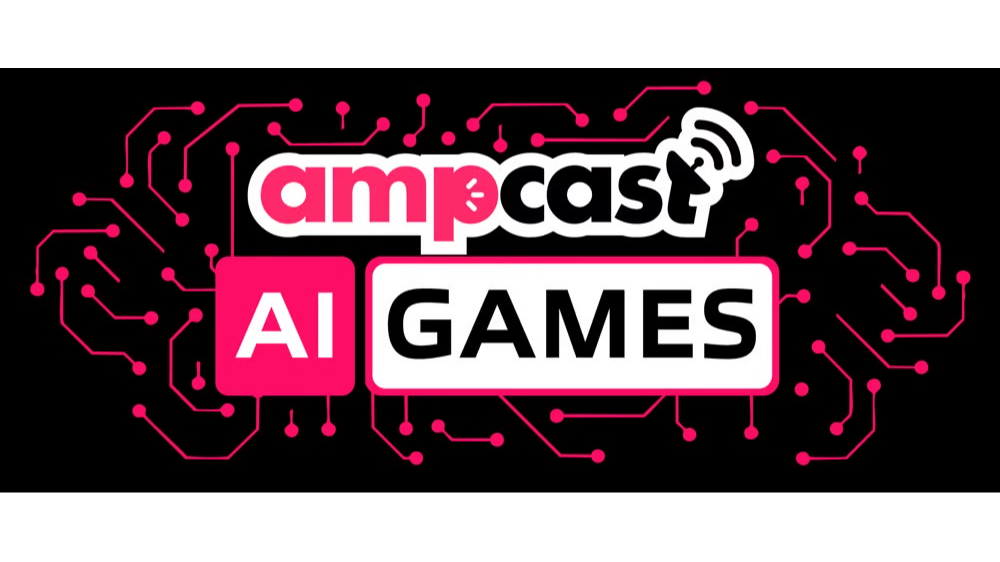Key Takeaways:
- AI employees use large language models to automatically handle tasks while adjusting to your changing business needs.
- Unlike traditional bots, AI employees make human-like decisions and understand context for better business problem-solving.
- These digital workers function continuously and fit with your existing workflows without disruption.
- AI systems manage routine tasks while sending complex decisions to humans, creating an efficient division of labor.
- AmpiFire helps businesses implement AI technologies that boost productivity while maintaining human oversight.
AI Employees Are Changing How Businesses Operate
The business world is transforming rapidly. AI employees have become genuine difference-makers, changing how companies operate, make decisions, and engage with customers. But what exactly are these digital workers, and how do they differ from previous automated systems?
AI employees are advanced digital systems performing tasks independently to increase efficiency and support collaboration in modern workplaces. Using the power of sophisticated machine learning and large language models, these intelligent assistants are reshaping operations across industries. helps businesses implement these transformative AI technologies that enhance productivity without disrupting existing workflows.
What Makes AI Employees Different From Traditional Technology
1. Advanced Decision-Making Capabilities
Traditional bots follow rigid, pre-programmed rules—they’re digital servants executing exactly what they’re told. AI employees, however, possess remarkable adaptability and capability for human-like decision-making. They analyze complex situations, weigh multiple variables, and arrive at nuanced solutions that previously required human intelligence.
This advanced cognition stems from sophisticated machine learning algorithms, enabling AI employees to understand context, learn from experiences, and improve over time. Rather than just executing commands, they interpret intent and respond appropriately—often finding innovative solutions humans might miss.
2. Adaptability to Changing Business Needs
Perhaps the most powerful feature of AI employees is their ability to adjust to evolving business requirements. They understand your business objectives and modify their approach as goals shift and priorities change throughout a project or quarter.
This adaptability stems from continuous learning capabilities that allow AI employees to:
- Recognize patterns in changing business environments
- Update their knowledge base with new information in real-time
- Refine their processes based on feedback and measured results
- Adjust their approach when facing unexpected situations or challenges
3. Integration of Multiple AI Technologies
Modern AI employees aren’t powered by a single technology but rather a sophisticated combination of advanced systems working together. They integrate natural language processing, computer vision, predictive analytics, and other AI technologies to create comprehensive solutions for complex business problems.
This integration enables AI employees to handle complex, multi-step processes spanning different domains and requiring various types of intelligence. For instance, an AI employee might analyze customer sentiment data, generate personalized recommendations based on that analysis, and then communicate those insights in natural language—all as part of a seamless workflow that previously required multiple human specialists.
How AI Employees Work With Your Team
Modern business success increasingly depends on effective human-AI collaboration. When implemented thoughtfully, this partnership creates a powerful synergy that amplifies human capabilities rather than replacing them.
1. Smart Task Delegation and Human Escalation
AI employees excel at handling routine, repetitive tasks that would otherwise consume valuable human time and energy. They process data, schedule appointments, respond to common inquiries, and complete administrative work with remarkable speed and accuracy—often 5-10x faster than their human counterparts.
What makes this system truly effective is the intelligent escalation mechanism. When an AI employee encounters a situation requiring human judgment or creativity, it automatically routes the task to the appropriate team member. This creates an efficient division of labor where:
- AI handles high-volume, routine operations 24/7
- Humans focus on complex decision-making, creative problem-solving, and relationship building
- The system continuously learns which tasks to handle versus which to send to humans based on feedback
For example, in a sales environment, AI employees might qualify leads based on predetermined criteria, but pass high-value opportunities to human sales representatives who can provide the personalized touch needed to close complex deals.
2. Seamless Integration With Existing Workflows
One of the biggest advantages of modern AI employees is their ability to integrate with your existing tools and systems. Unlike earlier technological advances that required complete overhauls of business processes, today’s AI fits into your current workflows with minimal disruption.
This integration happens across various platforms:
- Email systems (Gmail, Outlook) and communication tools (Slack, Teams)
- CRM and customer management software (Salesforce, HubSpot)
- Project management platforms (Asana, Monday, Jira)
- Data analysis and reporting systems (Tableau, Power BI)
- Document processing and storage solutions (Google Drive, SharePoint)
By working within familiar environments, AI employees reduce the learning curve for human team members and increase adoption rates across organizations. Tools from providers like AmpiFire are designed specifically to integrate with these existing systems, making implementation surprisingly straightforward.
3. Collaborative Human-AI Models
The most effective AI implementations use human-in-the-loop systems, where AI and humans work together synergistically. These collaborative models allow humans to provide oversight, feedback, and correction while AI handles the heavy lifting of data processing and routine tasks.
This collaboration creates a continuous improvement cycle:
- AI performs tasks and makes recommendations based on available data
- Humans review outputs and provide feedback or corrections
- AI learns from this feedback and improves future performance
- The entire system becomes more effective over time, requiring less human intervention
A practical example is content creation, where AI can generate initial drafts based on specific requirements, while human editors provide refinement and ensure the final output matches brand voice and strategy.
Real-World Applications Transforming Operations
AI employees are already making significant impacts across various business functions. Here are some of the most transformative applications that are delivering measurable results today.
1. Customer Support: Faster Resolution Times
In customer service environments, AI employees are changing how businesses interact with their clients. These systems can:
- Handle up to 80% of routine customer inquiries without human intervention
- Provide instant responses at any hour, reducing average response time from hours to seconds
- Identify customer sentiment and adjust tone accordingly for more personalized interactions
- Access complete customer histories for context-aware service
- Smoothly pass complex issues to human agents with full conversation context
The result is greatly improved response times (often 60-70% faster), consistent service quality regardless of time or volume, and increased customer satisfaction—all while reducing the workload on human support teams who can focus on complex customer needs.
2. HR Processes: Reducing Bias and Improving Efficiency
Human resources departments are using AI employees to streamline operations and improve hiring outcomes. These applications include:
- Resume screening that focuses on skills and qualifications rather than demographic factors
- Automated interview scheduling that reduces hiring timelines by 30-40%
- Standardized initial assessments that reduce unconscious bias in the hiring process
- Onboarding process management that ensures consistent employee experiences
- Performance data analysis for more objective reviews based on measurable metrics
By reducing bias and handling administrative aspects of HR, AI employees free human HR professionals to focus on the interpersonal elements of talent management and workplace culture development that truly drive organizational success.
3. Data Analysis: Turning Information Into Actionable Insights
Perhaps one of the most valuable applications of AI employees is in data analysis and reporting. These systems can:
- Aggregate data from multiple separate sources into coherent, unified datasets
- Identify trends and patterns that might go unnoticed by even experienced human analysts
- Generate comprehensive reports with visualizations tailored to specific stakeholders
- Provide predictive insights based on historical data patterns
- Continuously monitor data streams for anomalies or opportunities that require attention
This analytical capability transforms raw information into actionable business intelligence, enabling faster and more informed decision-making throughout the organization. Many companies report 40-50% improvements in decision speed after implementing AI analysis tools.
The Business Advantage: Why AI Employees Are Now Essential
As we look at the business landscape of 2025, it’s increasingly clear that AI employees aren’t just a competitive advantage—they’re becoming essential for sustainable business operations.
The organizations succeeding today are those using AI employees as core team members, applying their unique capabilities to achieve extraordinary results. Companies implementing comprehensive AI strategies report an average 35% increase in operational efficiency and 28% reduction in costs within the first year alone.
Beyond raw efficiency, businesses are finding that AI employees enable them to:
- Grow operations without proportional increases in headcount or costs
- Respond to customer needs with unprecedented speed (often reducing response times by 70-80%)
- Make data-driven decisions based on thorough analysis of vast information sets
- Free human talent for strategic thinking and creative problem-solving
- Maintain operational continuity 24/7, regardless of external circumstances
The question has shifted from whether businesses should adopt AI employees to how quickly and effectively they can integrate these digital workers into their teams. A recent study found that companies that delayed AI implementation experienced 15-20% competitive disadvantages in market responsiveness compared to early adopters.
Forward-thinking leaders recognize that human-AI collaboration represents the next phase of work—not replacing human intelligence but amplifying it. By combining human creativity, judgment, and emotional intelligence with AI’s processing power, pattern recognition, and tireless execution, organizations achieve outcomes that would be impossible with either humans or AI working alone.
The future of work isn’t human versus machine, but humans and machines working together in harmony. Those who master this partnership will lead their industries in the years ahead, while those who resist will increasingly find themselves unable to compete on either cost or quality.
AmpiFire specializes in helping organizations implement advanced AI solutions that transform operations and drive sustainable growth through .
{video_pr:link}


Comments are closed.